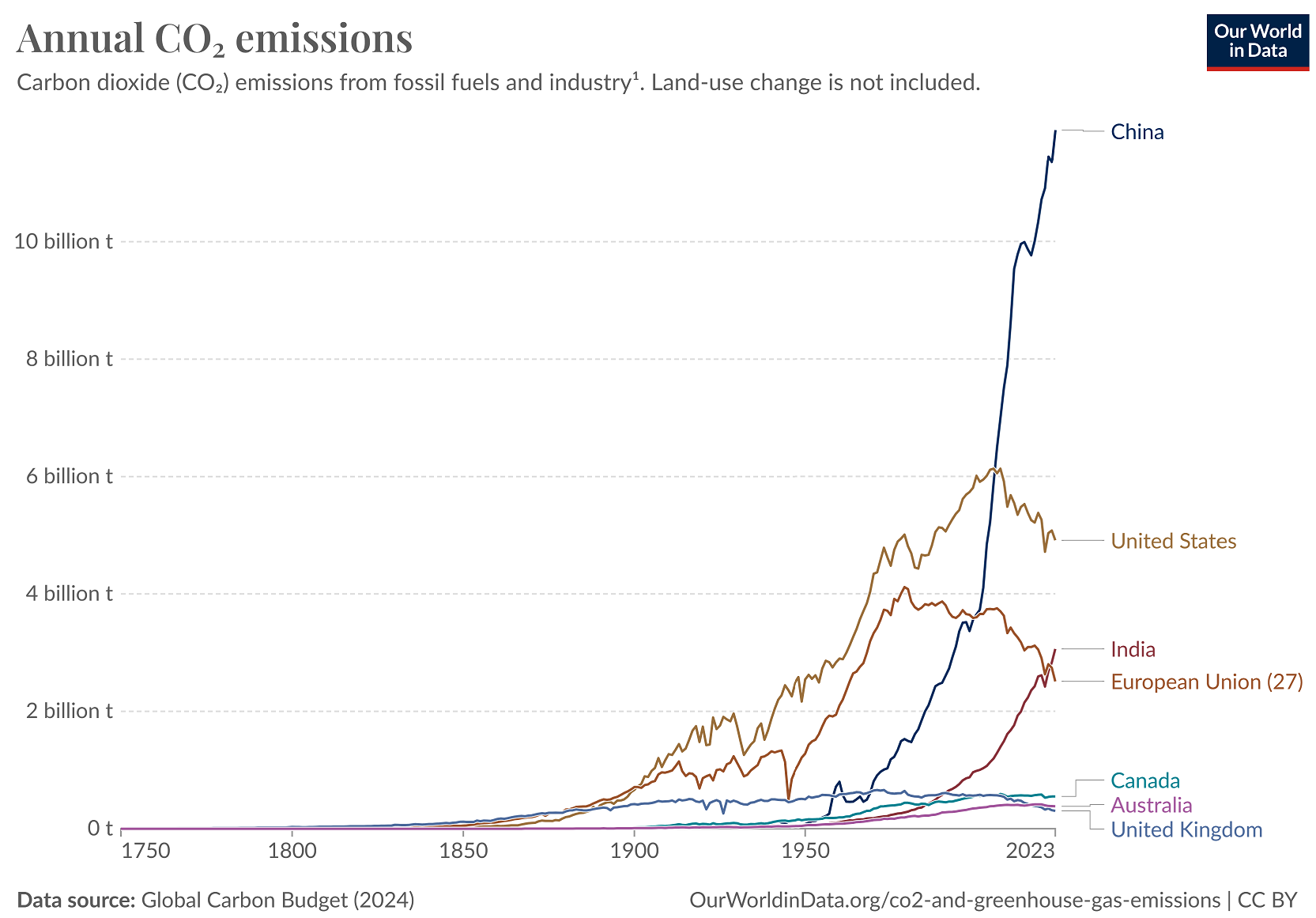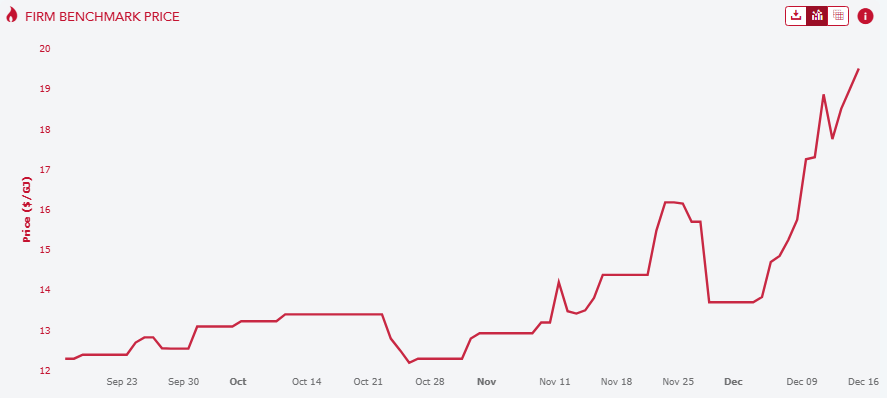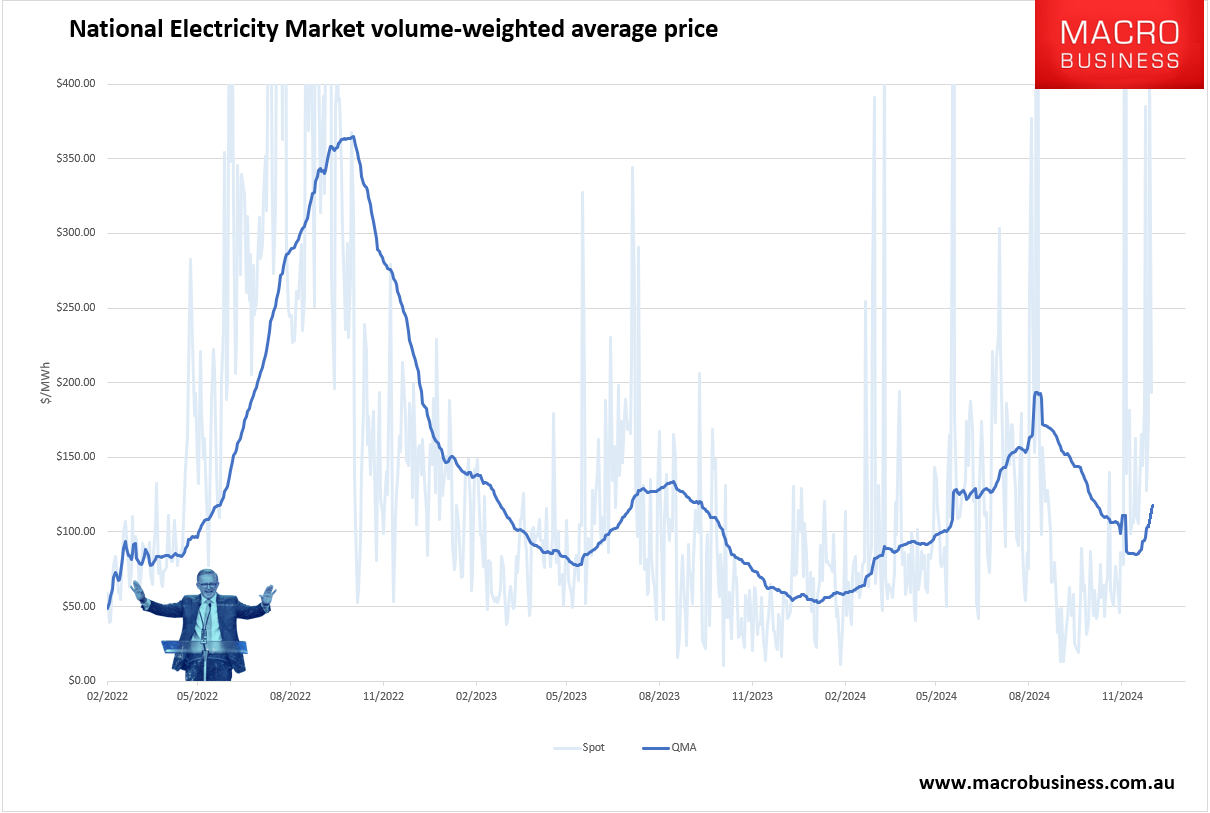Australia’s governments have chosen to abandon cheap and reliable coal-fired generation in the name of ‘net zero’.
This is despite China burning Australian coal and gas without restraint.

Australian coal plants were shut down, and investment and maintenance in the remaining plants were curtailed. After all, why invest in maintenance when your plant has been slated for closure and will become a stranded asset?
The shutdown of coal-fired generation would be fine if it were replaced with reliable generation. However, renewables are inherently intermittent.
Solar power begins to fade around 3 p.m. when people return home from work. Wind power is highly unpredictable and inconsistent.
This unreliability was displayed in “renewable haven” South Australia, which has shut down all of its coal-fired generation.
South Australia sweltered on Sunday evening but was left with minimal renewable electricity generation due to a lack of solar (nighttime) and wind.

South Australian energy mix
As shown above, 68% of South Australia’s electricity generation at 7:15 pm on Sunday was from gas-fired power, with a further 5% from burning imported diesel fuel.
The above chart shows why renewables need backup firming power from gas.
However, we made gas extremely expensive on the East Coast because the federal government refused to reserve gas for domestic use when it approved the Gladstone LNG terminals over a decade ago.
Today, Australia’s East Coast gas price is $A19.50, versus about $A4 in the USA (the world’s largest gas exporter).
These are the prices that triggered the creation of the Australian Domestic Gas Security Mechanism (ADGSM) in 2017. Yet today it sits idle on the shelf as a new inflationary crisis engulfs Aussie energy.

Electricity prices are more than double year on year.

Futures are suggesting the AER will hike retail tariffs for 25/26 by 20%.

Despite exporting about three-quarters of Australia’s East Coast gas (mostly to China), we have chronic domestic shortages.

Now East Coast Australia is building import terminals that will lock in high domestic prices forever and make gas-fired electricity generation prohibitively expensive.
Importing gas is also incredibly wasteful and bad for the environment since it requires freezing and transport, which are hugely energy-intensive.
Every Australian on the East Coast should ask themselves: How is it that the most energy-rich nation on earth, which exports huge volumes of cheap gas and coal to Asia, experiencing domestic energy shortages and soaring costs?
Decades of disastrous energy policy have destroyed living standards, driven up the cost of living and inflation, forced manufacturers out of business, and consigned Australians to lower living standards.
Affordable and reliable energy is the foundation of a modern economy and society. Our incompetent and corrupt policymakers have yet to deliver either.

